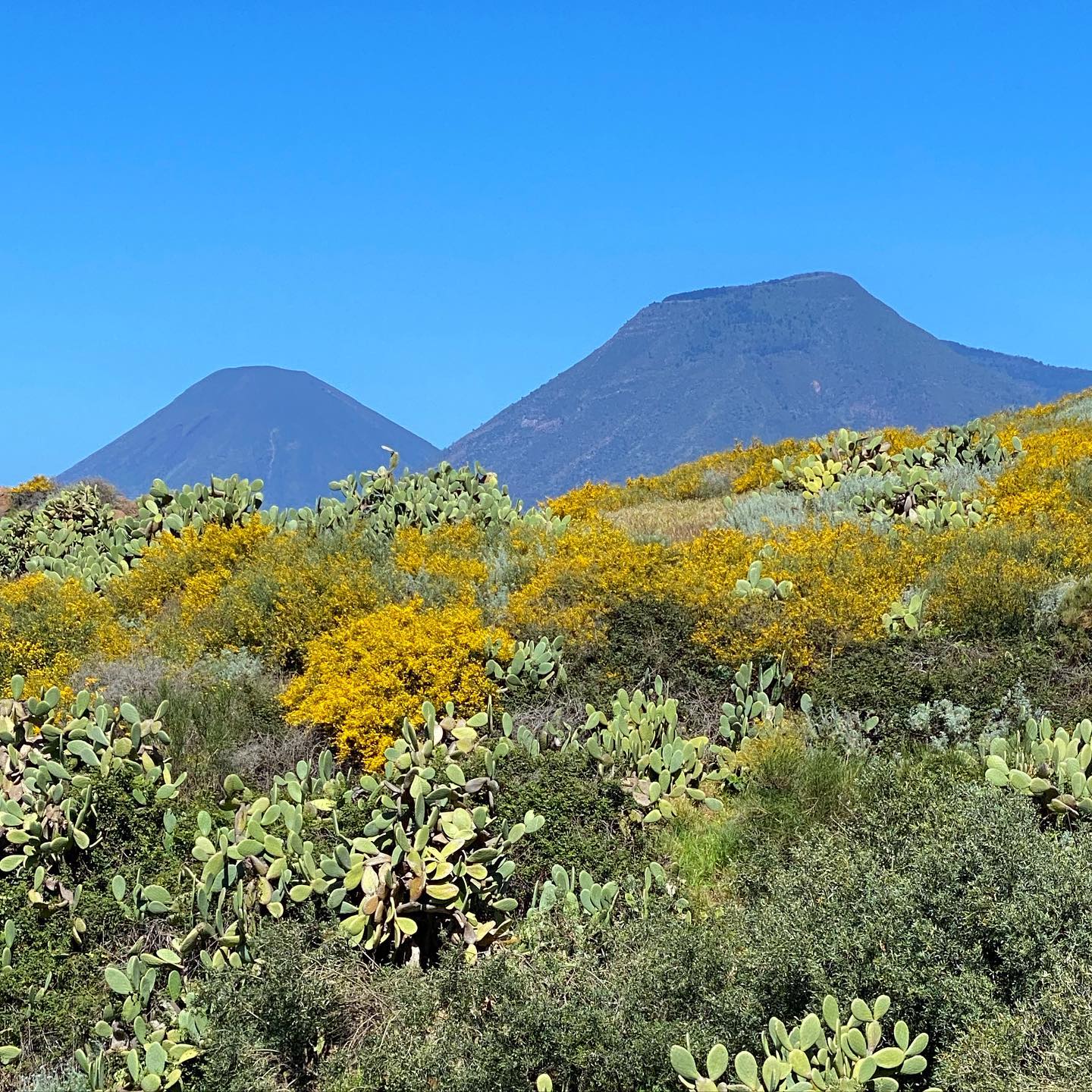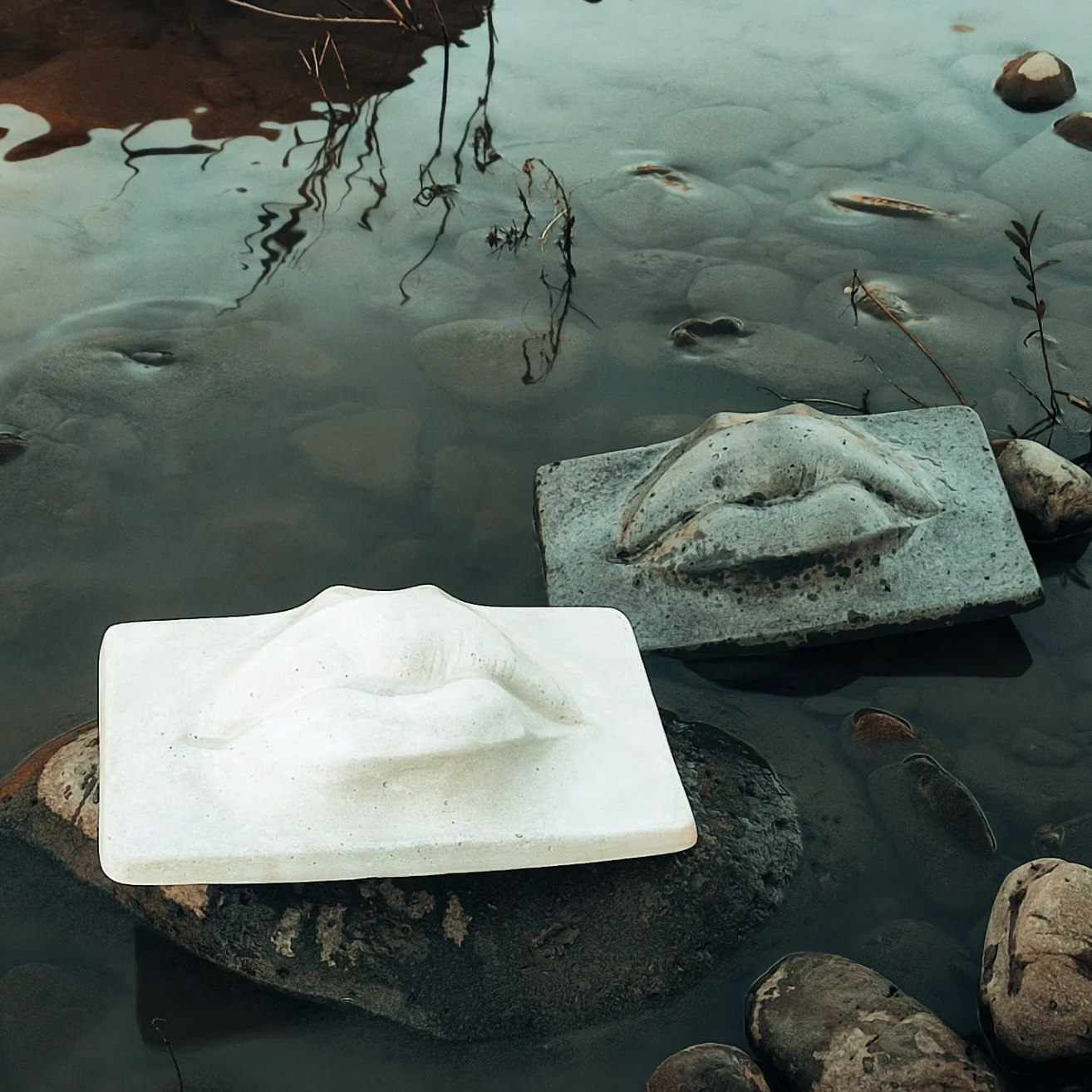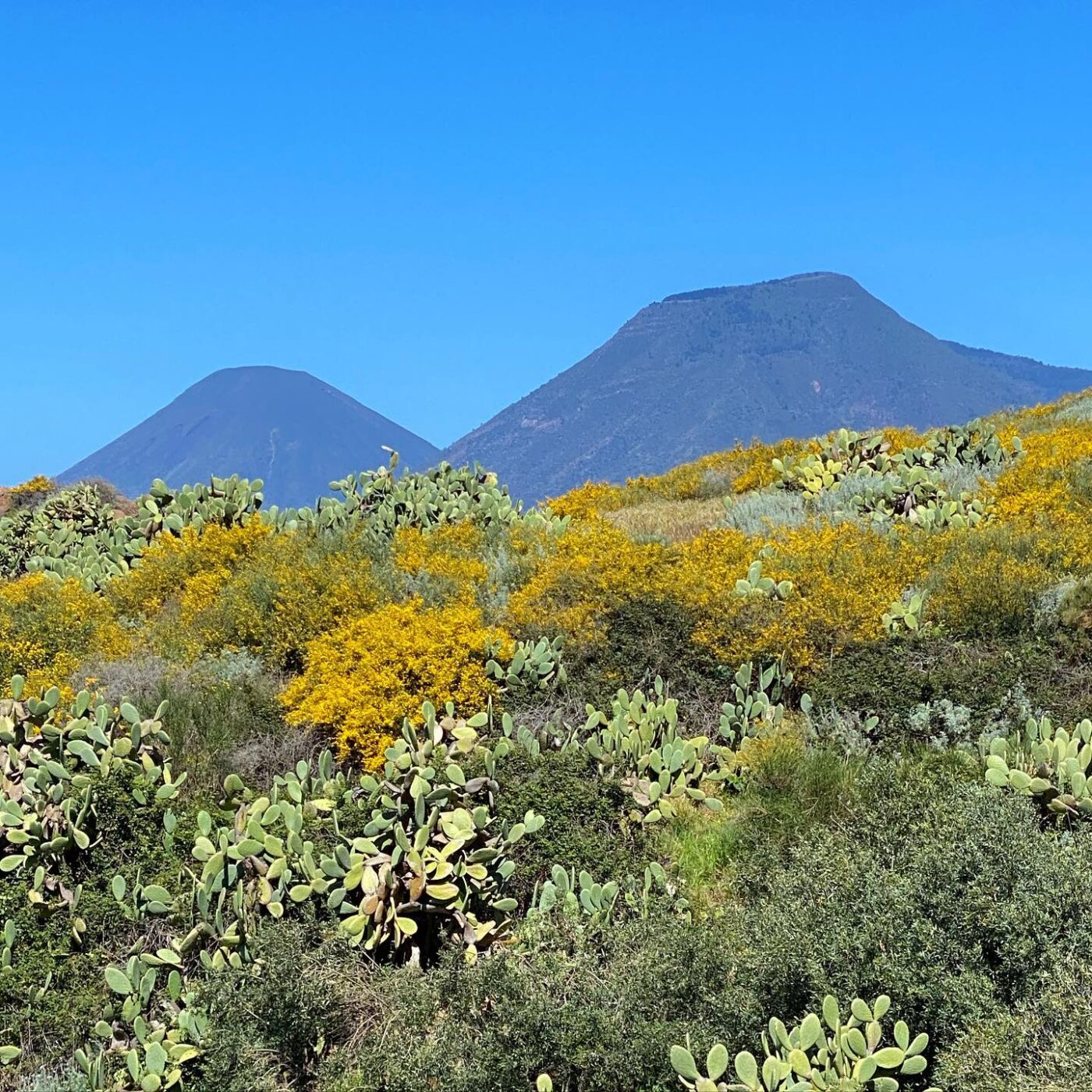Gabriella Picone (Idda Studio)
Gabriella Picone, a creative force to be reckoned with, was raised between two worlds–the bustling city streets of Manhattan and the serene, volcanic island of Lipari. As a child, she immersed herself in old folklore tales, superstitions, and traditional Sicilian arts and crafts, planting the seeds for her future creative endeavors. In 2019, Gabriella’s dreams became a reality when she founded Idda Studio, named after the Sicilian word for “her” (as well as the local nickname for the active volcano Mount Etna) and inspired by the strong women in her life. Gabriella finds her greatest inspiration during summers spent with her family on Lipari, where her father grew up and where she has set up her studio. It’s on this little island, surrounded by its tranquil beauty and her family’s heritage, that she creates and explores new artistic horizons: “I’m most inspired when I’m in Sicily–especially in the Aeolian Islands. There’s such a rich culture here that still lives on today and is reflected through the Greek ruins, baroque architecture, and volcanic terrain.”
Gabriella specializes in paintings, textiles, and ceramic designs like wavy, asymmetrical mirrors, hand-painted bathroom tiles, and vases with a mishmash of Sicilian iconography; each contains a playful charm. Her pieces narrate traditional Sicilian stories through soft multi-hued colors, the Mediterranean landscape, mythological creatures, wildflowers, fruits, and abstracted female faces. She mixes her own glazes and utilizes decorative painting techniques.
“Family, culture, intergenerational conversations and superstitions, late-night endless meals of homemade pasta, fresh fish and sweet desserts, blinding sun and saturated volcanic rocks, the smell of sulfur from Vulcano Island, the taste of glistening salty seas, nonnas peeping from the balcony windows, and waiting in the chaotic line for the late aliscafos–this is what my Sicily is!” Gabriella fondly tells me.


Stefania Boemi
From the stunning countryside of Bronte, renowned for its delectable pistachios, Stefania Boemi is a woman of many talents. With a degree in Physiotherapy and 25 years of experience in Neurorehabilitation, she devotes her mornings to helping others. But the rest of her day is reserved for her true passion: ceramics.
Stefania’s artistic journey began in childhood, fueled by a keen eye for beauty and a flair inherited from her mother, but she finally delved into the world of ceramics 15 years ago after purchasing her own home. While furnishing the space, she sought unique and exclusive objects–and she found them, made by her own hands.
“My work is imbued with memories of my place of origin,” Boemi tells me, but I’d say it’s imbued with more than just memories; working with cement, natural pigments, and gold leaf for the embellishments, Boemi’s work is tangibly Sicilian. With her collection of anthropomorphic vases, a tribute to the Sicilian Moor’s heads, Stefania forgoes the typical decorative methods, instead embellishing them with words like “femme” and accessories like eyepatches. She further eliminates the classic multicolor style in favor of a sleek monochrome palette ranging from matte white and black to bright pink, vivid ultramarine, and dark midnight blue. Stefania’s artistic versatility also shines through her Lips sculptures, hangable ceramic pieces made from the volcanic sand from Etna.
“Sicily for me is a place full of energy, surrounded by the sea and blinding lights on a sunny day. A place that hides and still retains places of unique magic. And it’s this atmosphere that I would like to keep my work in!” she exclaims.


Alessandro Iudici (Studio Iudici Ceramiche)
Alessandro Iudici‘s family has worked in ceramics for nine generations at Studio Iudici Ceramiche, passing down their knowledge and techniques like an unbroken thread. Born and raised in the historic town of Caltagirone, Alessandro learned the craft by playing with clay and sitting at the lathe (potter’s wheel) of his family’s centuries-old kilns. Though he initially pursued a career as an art teacher, his love for ceramics eventually led him to leave the profession and devote himself fully to the family trade. “My ceramics speak of Sicily–it’s the main ingredient for the birth of every single ceramic!” he tells me, and his connection to his land really is palpable in his creations.
Alessandro has infused his family’s historical production with his own passion, creativity, and a bit of whimsy. His collection includes the “I Curiosi Woman” vase, which sees a curly-haired Sicilian peering out from between the vessel’s stripes; others vases dressed in, say, a polka-dot bathing suit or checkered dress; and the “Malandrina” pitcher, which takes the shape of a traditional Sicilian wicker wine bottle and features a sinuous silhouette of a woman defined by a light blue dress and flowing red hair that forms the handle. Alessandro’s work is a blend of old and new, seamlessly harmonizing the traditional techniques of his family with a fresh, playful approach.


Anna Marconi and Manuela Bartell (Maremoro)
Born in Verona and Rome, but with hearts deeply rooted in the colorful island where they now live, Anna Marconi and Manuela Bartell joined forces in 2017 to create Maremoro. From salad bowls to side tables, each product in their collection tells a story of Sicily’s sunshine-bright hues, crystal-clear sea, rich volcanic soil, sweet-smelling shrubs, and zesty lemons and oranges. They tell me their Sicily is “joie de vivre!” which makes sense because their pieces really are joyful. Some pieces showcase the classic, elegant Mediterranean style, with themes that harken back to the 17th and 18th centuries, while others lean towards an almost childlike cheerfulness. Salad bowls are ringed by 3D fish; sets of eyes and lips are framed by chili peppers on a dinner plate; traditional Moor’s heads are remade with cummari, Sicilian women.
Each item, handcrafted in Caltagirone, requires several days’ work, and all frills, crowns, necklaces, leaves, flowers, citrus fruits, chillies, and gold décor are shaped and applied by hand.


Vincenzo Messina (Studio Le Nid)
On the slopes of Mount Etna, in the small Sicilian town of Paternò, lies Studio Le Nid, founded by the ceramicist Barbaro Messina in 1966. Known for its innovative maiolica techniques, the studio makes ceramic tiles for floors, walls, and tables.
In 2001, Barbaro’s children Vincenzo, Filippo, and Rita Messina took the reins of the company. Their designs “intend to narrate the inspiring uniqueness of Sicily” and are characterized by delicate floral and star motifs, geometric mosaics that recall Sicily’s Moorish art influence, and designs reminiscent of waves and tall grass billowing in the wind. Some collections, like “Dèjà Vu”, are more contemporary with simple line drawings and primary colors that bring to mind abstract art.
The family also draws inspiration from the island’s folklore and incorporates volcanic materials from Mount Etna. To them, Sicily is fertile in both inspiration and materials: “Sicily is like our mother, always generous!”



